Prague is an absolutely breathtaking city in Central Europe. Its gothic architecture, red roofs, blue domes and countless spires sticking up all over the city are inspiring. Walking through its 14th century “New” Town and even older Old Town will make you feel like you’re in the middle of a storybook. That is, aside from the massive crowds.
I first visited Prague on my very first trip to Europe in 2017. During that trip, I’d been primarily sticking to cities in Western Europe. Honestly, they had begun to feel a bit repetitive. Watching the landscape and architecture change on my bus from Berlin to Prague was new and exciting and incredible. I just thought Prague was the most beautiful and coolest city I’d ever seen.
Since my first time in Europe, I’ve visited many other destinations across five continents and seen a variety of fairytale-esque cities. But I’ve never forgotten that impression Prague left on me.
Not going to lie, I was a little nervous about revisiting it and not feeling that same sense of wonder I felt the first time. After all, I was younger, more inexperienced and on a different kind of trip. Of course it was different. I was a little taken aback by the crowds and the higher prices. But Prague still wowed me with its never ending beauty and quirky art.
I didn’t have a blog back in 2017, but I wanted to share some things to do in Prague now that I’ve revisited it as an older and wiser traveler.
Here are 16+ things to do in Prague over three days in 2024.
(With some additional suggestions based on my 2017 visit at the end.)
Explore Strahov Monastery
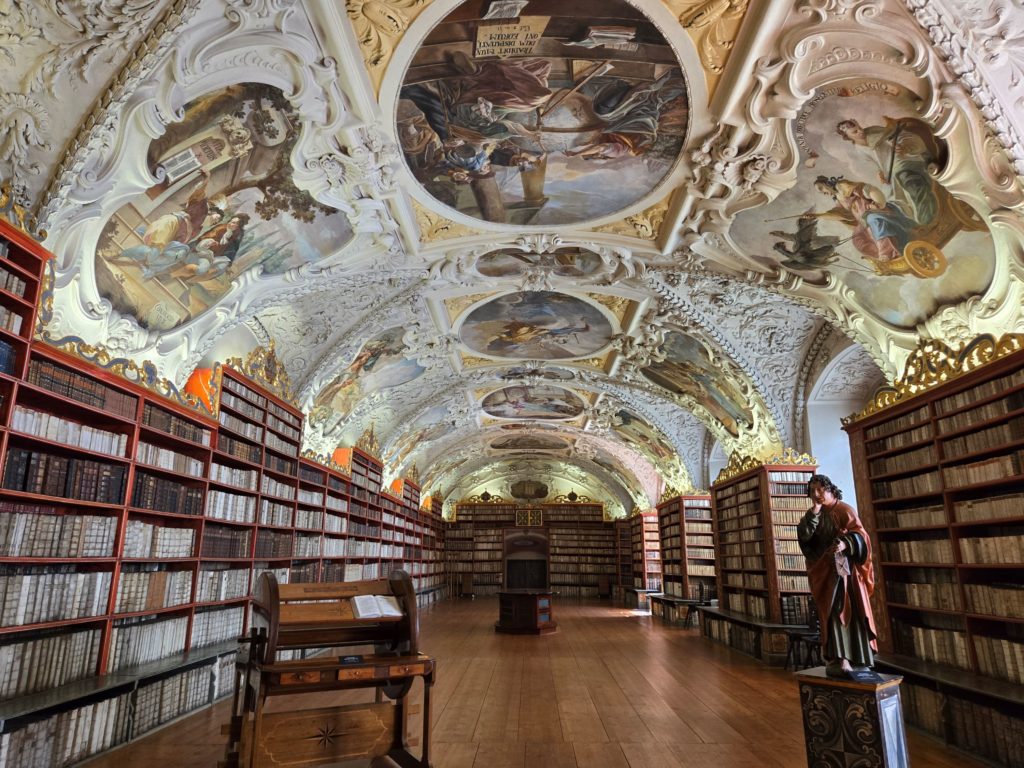
Strahov Monastery is an abbey founded by the Bishop John of Prague and Duke of Bohemia in the 12th century. It was originally built with wood and gradually replaced with stone over several years. The monastery has survived significant damage from natural disasters and wars over the past several centuries.
The monastery complex still sits atop a high hill in the center of Prague. There is an incredible view from the top where you can admire both the architecture of the monastery and views of Prague below.
The complex is free to see from the outside, but you have to pay to go inside the exhibits. When you get to the ticket booth, you can decide to either purchase a ticket for all the exhibits, or for different exhibits individually.
I was most interested in seeing the library, theological hall and philosophical hall, so I bought tickets for this entrance only. At the entrance to the library building are writings and drawings from hundreds of years ago. Then, the library hall has a collection of sea creatures for decoration. As you walk through the hall, you can also see collections of stones, old terrestrial and celestial globes and even what they claim is a unicorn horn.
You can only look into the theological and philosophical halls from the outside, but the interior is gorgeous. Belle (from Beauty and the Beast) would be envious of this library. They are decorated in classical style, with beautifully painted ceilings, statues and rows upon rows of books. The theological hall has an entire wall of bibles in different languages/versions.
Watch the Astronomical Clock Strike at the Top of the Hour

One of the top attractions in Prague is the famous Astronomical Clock. You can find this medieval clock in the Old City, usually with a large crowd gathered around it as it approaches the top of the hour.
Prague’s 15th century Astronomical clock is the third-oldest astronomical clock in the world. It’s the oldest one still currently working. The clock shows dials representing the positions of the sun and moon, other astronomical figures, Catholic saints and a figure to represent death. When the clock strikes the hour, you’ll see the “Walk of the Apostles” where these figures move around the clock face. The death figure strikes a bell to show the time.
It’s quite a spectacle each time the clock strikes the hour. If you want to see it, I recommend getting to the clock about 5-10 minutes before the hour for a good spot to watch the show. Beware of pickpockets as the crowd is quite large.
Visit Wenceslas Square
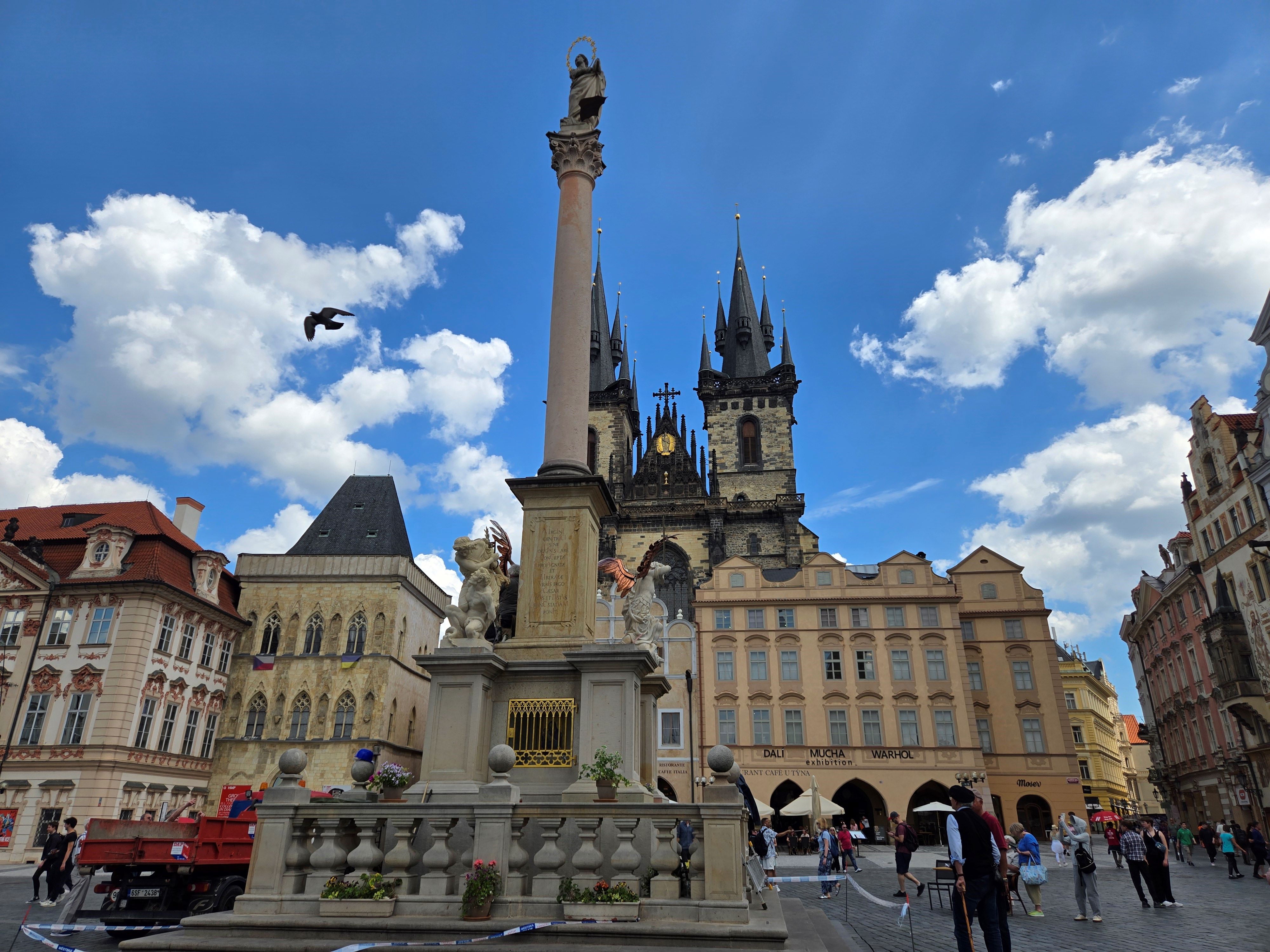
Wenceslas Square is one of the most visited and important squares in Prague’s New Town. The square was created in the 14th century when New Town was founded. It was originally called the “Horse Market” due to holding a horse market, but perhaps that name was too obvious. Now it’s Wenceslas Square after Saint Wenceslas, the patron saint of Bohemia.
This square has been an important site for gatherings, festivals and demonstrations since its inception. It was famously the site of the May Crisis protesting Nazi Germany in 1938 and demonstrations during the Velvet Revolution in 1989.
Wenceslas Square – more of a boulevard – is today still a large and important gathering place. It has shops, restaurants and museums and filled with historical monuments and beautiful architecture. It’s a top thing to do in Prague despite the crowds.
If you visit during winter, you can also visit the famous Christmas markets here.
Walk Across Charles Bridge
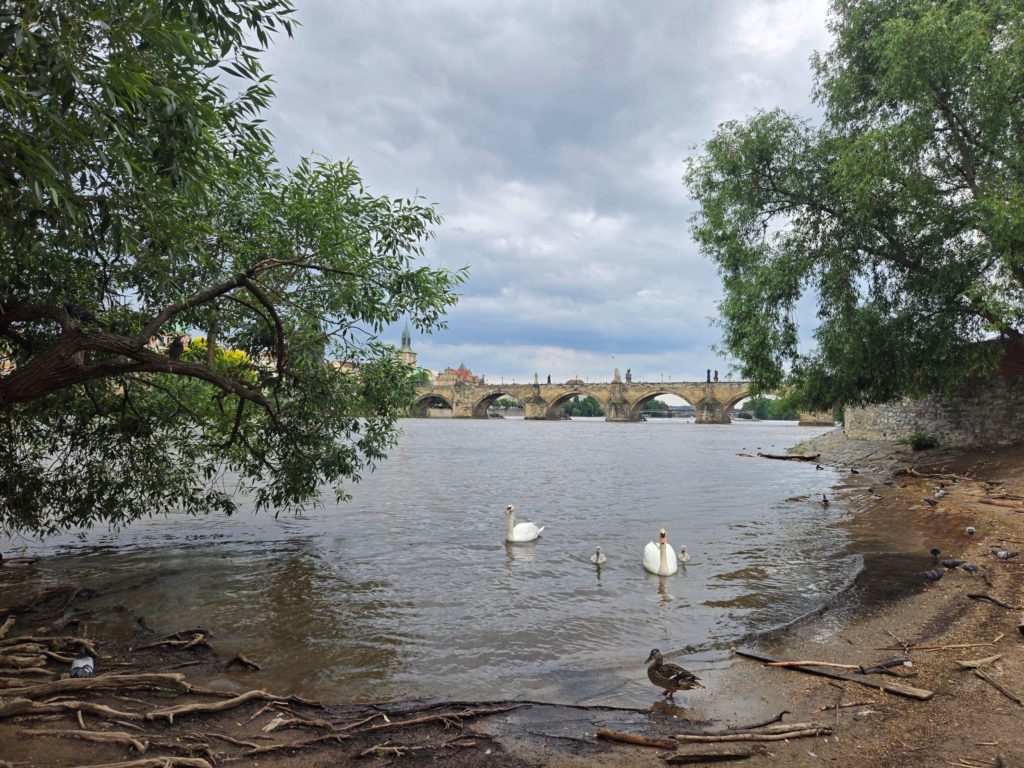
There are a few different bridges crossing the Vltava River in Prague. Charles Bridge is the most famous. It’s a medieval stone bridge from the 14th and 15th centuries by King Charles IV. It was originally called “Stone Bridge” but was officially renamed to “Charles Bridge” in 1870 as that was how people referred to it.
Charles Bridge is pedestrian-only bridge joining the Old Town and the Lesser Quarter of Prague. As you cross it, you can admire the views of the river, the neighborhoods and Prague Castle. There are also 30 statues and statuaries to see along the bridge during your crossing.
This bridge is the most popular to cross, so there are crowds, especially in the early afternoon. Beware of pickpockets on the bridge taking advantage of the close quarters. I recommend crossing the bridge either earlier in the morning or in the early evening when fewer people and no school groups are out and about.
There are also several viewpoints to get a good view of Charles Bridge across the river, including other bridges. I think I enjoyed other bridges partially for this reason.
See Prague Castle
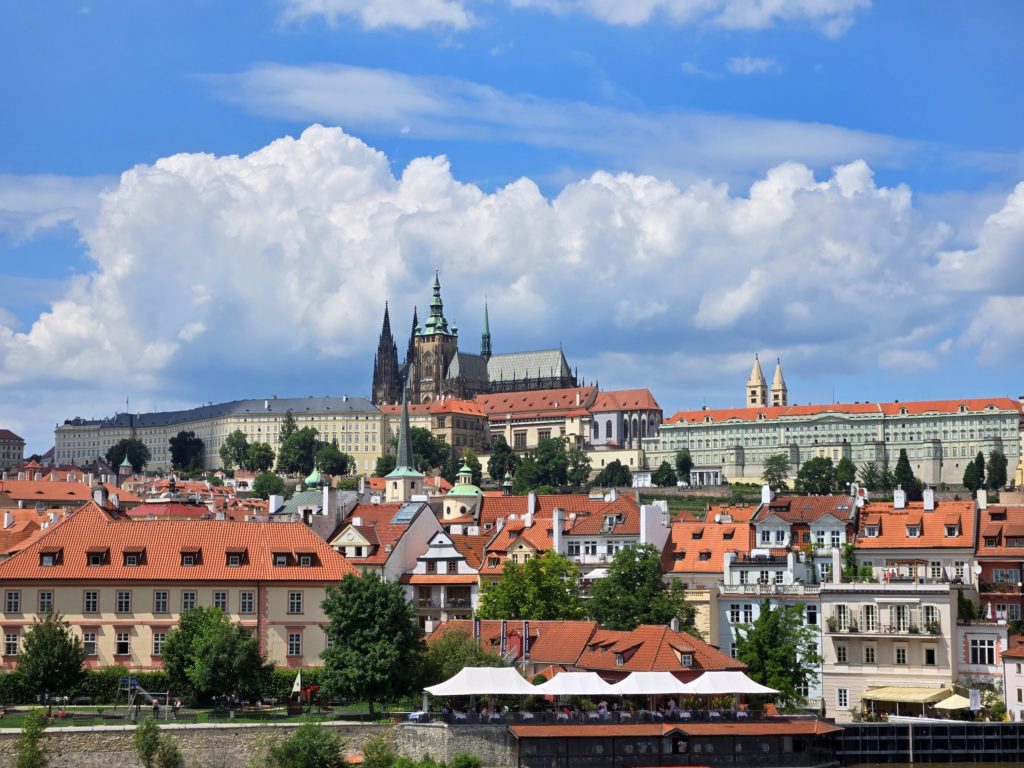
Prague Castle is a large castle complex sitting atop a high hill in Prague. The complex includes palaces, cathedrals, galleries and other important buildings. A UNESCO World Heritage Site, the oldest parts of the castle complex date back to the 9th century. It is also the largest coherent castle complex in the world.
For centuries, the castle complex housed the seats of power for kings of Bohemia, Holy Roman Emperors and presidents of Czechoslovakia. Today, it is still the residence and offices of the president of Czechia.
The Prague Castle Complex is technically free to enter, but the buildings and exhibits cost money. You can certainly enjoy exploring the large complex and admiring the eclectic architecture built up across centuries. My favorite building was St. Vilnius Cathedral.
There is also an incredible view of Prague from the Castle Complex, that is definitely worth a visit in itself. If you get lucky, you might also witness a changing of the guards. When I visited, there was an international drill sergeant exposition happening outside the castle as well. So you never know what you’ll get out of a visit!
Visit the Lennon Wall
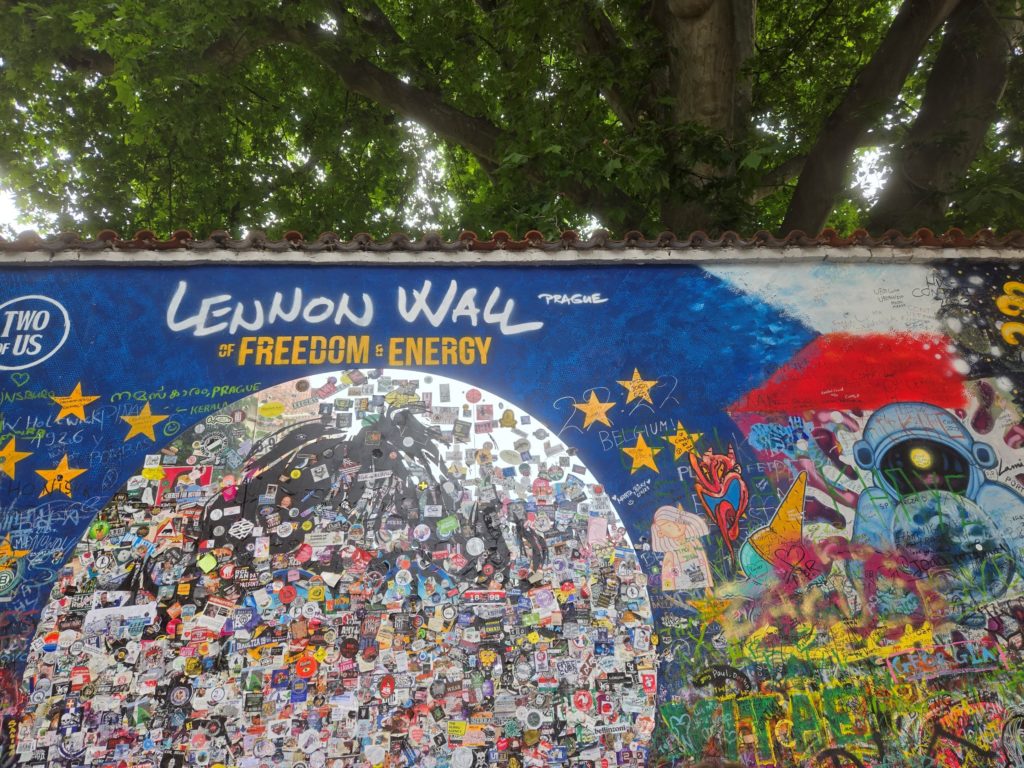
The Lennon Wall is an iconic graffiti wall in Prague, across from the French Embassy. The wall has been around since the 1960s but got its current name following the assassination of John Lennon in the ‘80s. Historically, it’s been filled with art, quotes and lyrics from Lennon and the Beatles.
When I first visited in 2017, this wall was mostly filled with different graffiti art and a Lennon outline on top. In 2024, this wall still has graffiti, but there is a lot of sticker art on the wall as well, and barely any mentions of Lennon and the Beatles.
It’s an interesting testament to the evolution of street art over time, and a must-see in Prague.
Tour the Kafka Museum
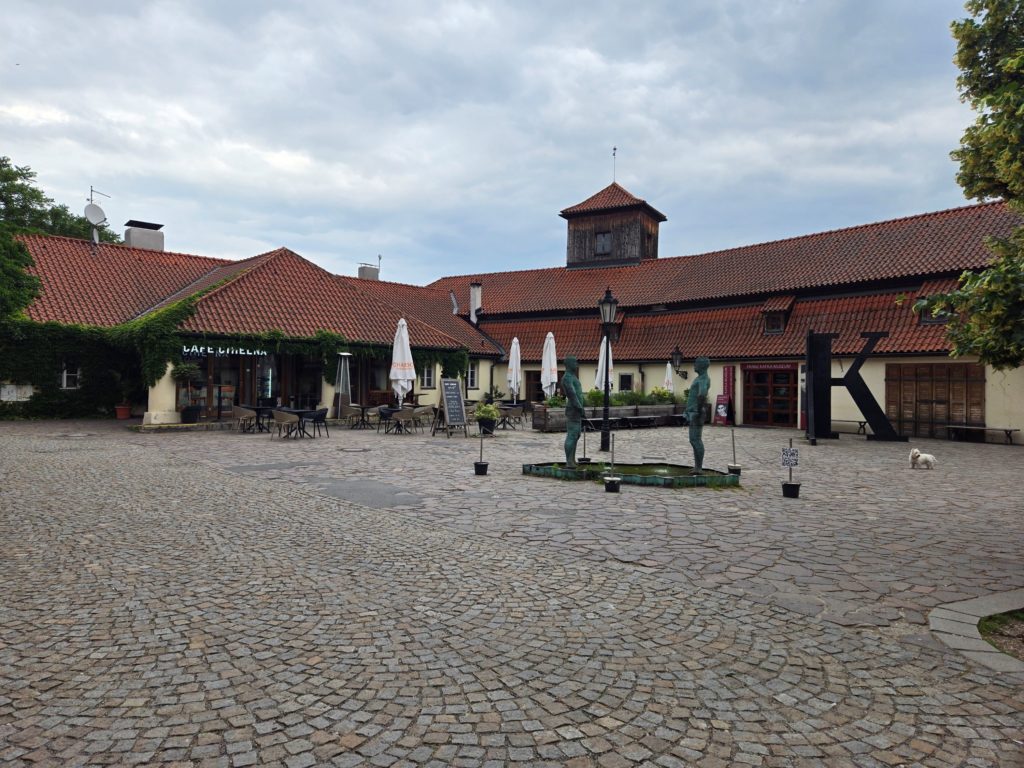
Iconic author Franz Kafka was born in Prague and lived there for most of his life. There is a museum about his life now in the Lesser Town. I read the Metamorphosis in high school, and Kafka’s writing immediately gripped me. Although I am not a huge literary nerd, I still was interested in visiting his museum.
The museum takes you through Kafka’s life from birth to death. It shows the route he walked to school every day and discusses how he was a terrible student. There are letters he wrote to his father to showcase the uneasy relationship he had with his parents.
Then, it takes you through his life as a young adult. Like other fresh college graduates working their first office jobs, Kafka was dismayed by the idea that he would be confined to an office for life. He considered his work as a law clerk the easy way out, rather than dedicating himself to his writing.
The museum also shows his various girlfriends and his battle with tuberculosis, which ultimately killed him. You can see first editions of his novels, and read about how his life experiences impacted their different themes.
The museum is a sensory experience. It’s dark throughout. Exhibits are sometimes accompanied by sounds or smells meant to invoke a bit of uneasiness. I believe that this was to help give you a glimpse of the darkness with which Kafka lived his entire life. Though I have no proof that’s the case.
The museum takes about 90 minutes to two hours to visit, and it’s definitely worth seeing! You can’t take photos and videos inside.
See the Crawling Babies
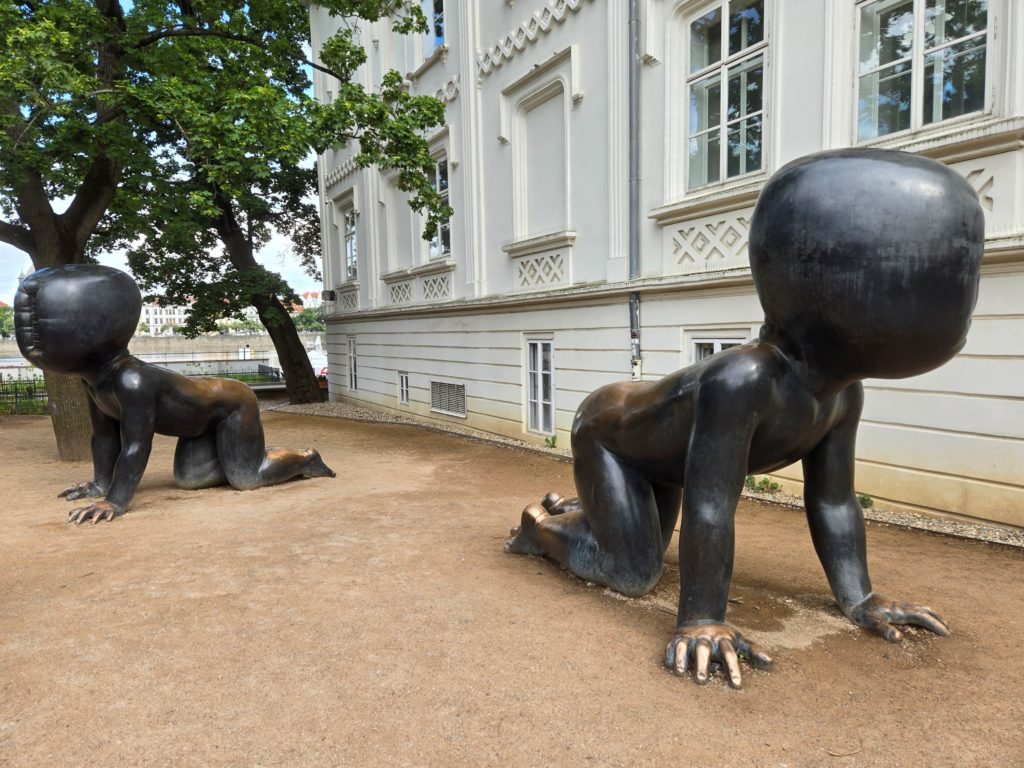
Also in the Lesser Town, the Crawling Babies are a slightly unsettling work of art by Czech artist David Černý. It consists of bronze sculptures of babies on their hands and knees, their faces replaced by bar codes. Some people consider the babies creepy, but I thought they were so interesting to see.
You can find these large sculptures outside the Museum Kampa in the park. Their feet and hands have the little wrinkles of a real baby.
Climb to the Letna Park Metronome
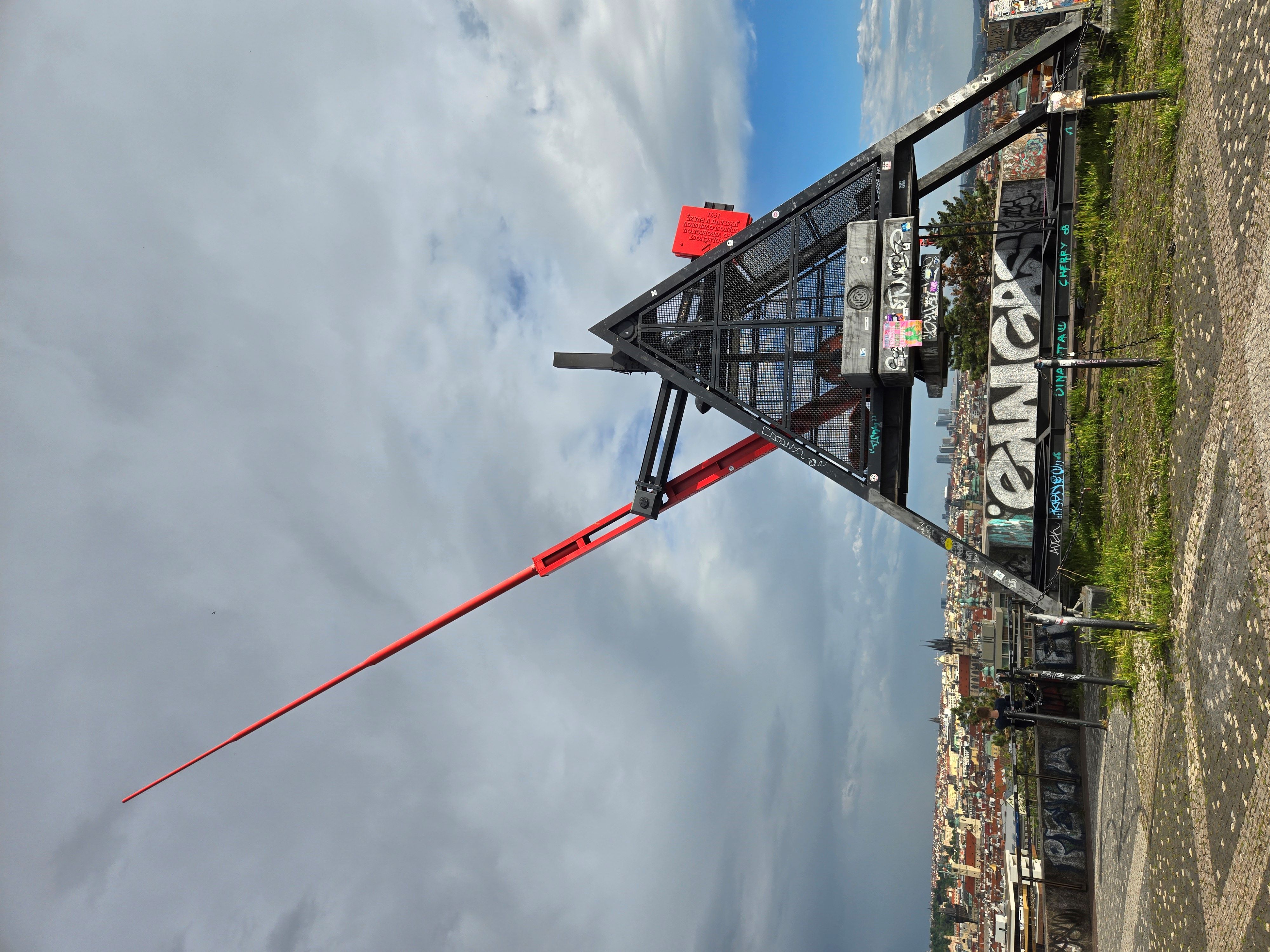
Letna Park is a sprawling park atop Letna Hill, with several viewpoints looking out over the Vltava River and city of Prague. From the Lesser Town, you can make the 15-minute climb up the hill, enjoying the view along the way.
Once you’re at the top of the hill, you can admire several viewpoints. You can of course see the fairytale spires sticking up all across the city, the Charles Bridge and the Prague Castle.
Walk a little further into the park, and you’ll find the famous Prague Metronome. The Metronome is a giant sculpture of a functioning metronome that overlooks the city. You can appreciate this enormous work of art and the views at the same time.
Explore the Vysehrad Fortress & Cemetery
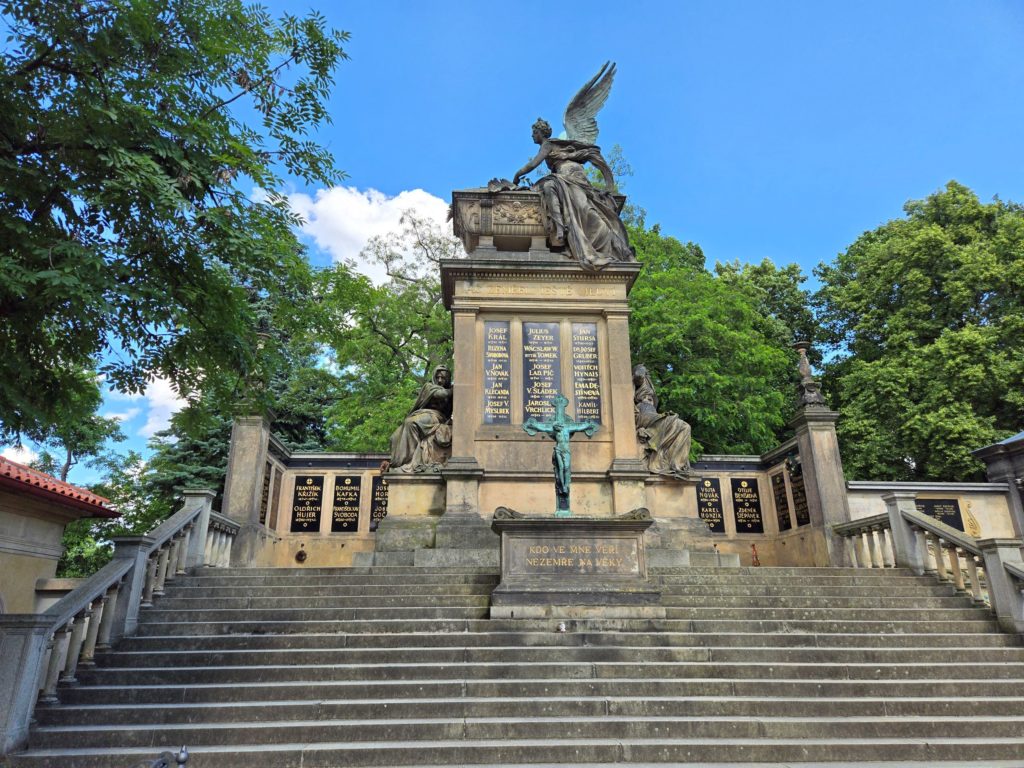
Located in Prague 2, Vysehrad is a large fort overlooking the city. The exact date and reason for building the fort is unknown, but it’s likely from the 10th century. Some think Vysehrad was the original settlement of Prague, founded when Duke Krok was searching for a safer home base.
The fortress is free to enter, but contains a ton of things to see. There are gardens with statues including the statue of St. Wenceslas that was rescued from Wenceslas Square. An 11th century neo-gothic basilica also sits in front of the Vysehrad Cemetery, which houses the graves of famous Czechs. Other old landmarks like the 11th century Rotunda of St. Martin and a black well sit inside the fort, too. You can also find sculptures like metal sharks in the parks here.
Vysehrad also has an incredible view of Prague – one of the best I saw during my time in the city. Because it is located outside of the main historical district, you have a view of the entire historical district from there.
Find the R2D2 and Minion “statues”
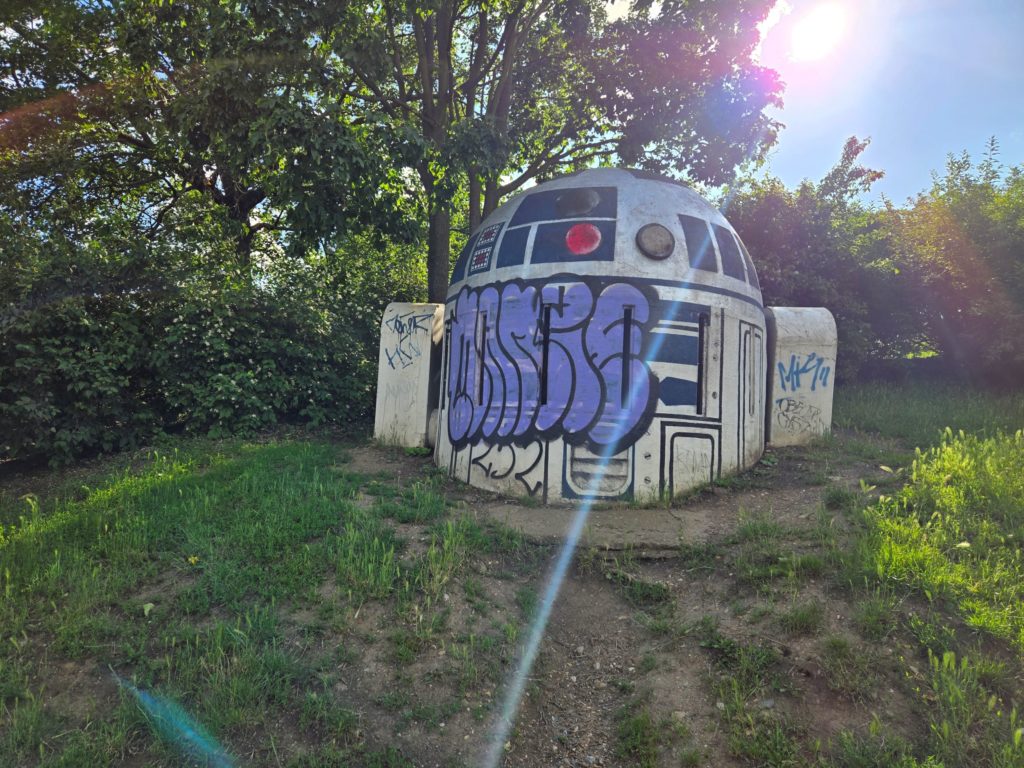
Sitting in Folimanka Park, also located in Prague 2, you can find R2D2 and a Minion. These statues are another testament to the creativity of artists in Prague, though these specific artists remain anonymous.
After air vents sat in Folimanka Park unused for years, artists transformed two of them into an R2D2 and a Minion. The R2D2 is more well known, as the artists both painted it and attached two concrete slabs to the side of the dome to get the correct shape. If you’re interested in exploring Prague 2 – and you should, if you’re planning to be in Prague for more than two days – I recommend coming to this park to find these landmarks.
Walk Down Prague’s Smallest Street
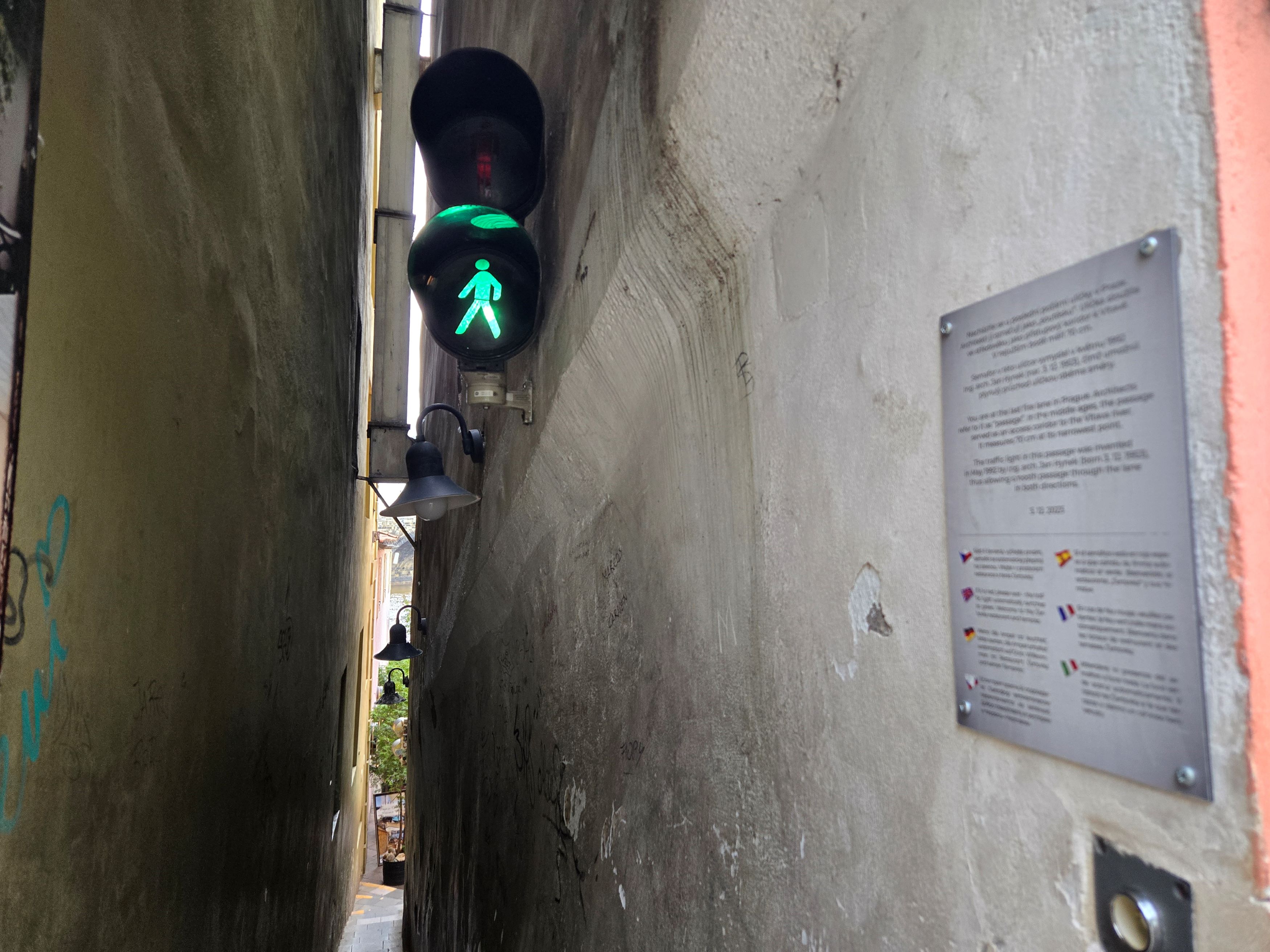
Another unusual spot in the Lesser Town is Prague’s narrowest street. This street is less than 20 inches (50 centimeters) wide and has a functioning walk/don’t walk sign. It was originally a fire escape, but now functions as a tiny street.
If you want to walk down this street, make sure there’s no other person coming from the opposite direction as two people can’t pass each other in the narrow alley. It’s certainly one of the more unusual things to do in Prague.
Visit a Brewery
At one point in recent history, Czech people drank the most liters of beer per capita than anywhere else in the world. Czechia is also the birthplace of the popular pilsner style of beer and the origins of Budweiser (Czechs say the Americans stole the name and formula – and I can confirm that Czech Budweiser is better).
Now, you can get plenty of styles of beer beyond a pilsner. Prague has plenty of craft beer bars and breweries around the city, and a beer museum in the New Town. I recommend finding at least one brewery either in Prague 1 or Prague 2 if you enjoy craft beer.
Eat at a “Lokal”
Lokals are restaurants with traditional Czech foods, fresh ingredients and solid pints of beer. They are a bit on the pricier side (though not too expensive), but good Lokal restaurants have rotating menus based on available ingredients. Despite its name, it attracts plenty of tourists, though they claim not to have any touristy gimmicks like bread bowls.
I visited one in the Lesser Town, near the Charles Bridge. The food tasted very fresh, and the pint of beer was delicious.
Enjoy Czech Goulash
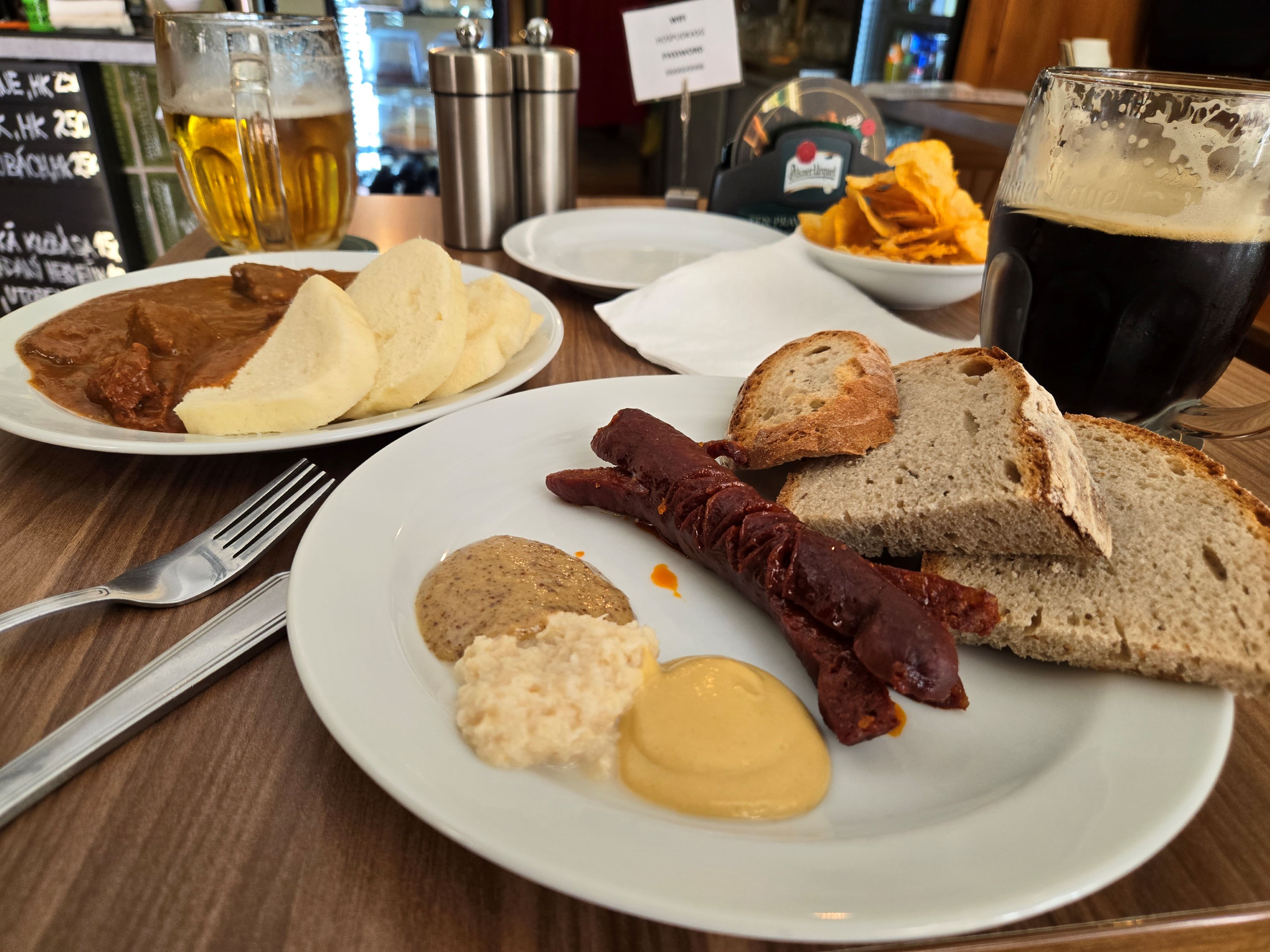
Goulash is a popular dish throughout Central/Eastern Europe. It’s similar to beef stew, traditionally made with beef, onions and spices. Each country has their own take on it, and I really enjoy Czech goulash.
In Prague, goulash typically comes with bread dumplings. I’m not entirely sure what makes them different from regular bread, but they add a nice flavor to the goulash. You essentially soak the bread dumpling in the stew and eat it with the beef. If you eat meat, don’t miss the goulash in Prague.
Check out the Nightlife
Prague is also famous for its nightlife, and people of all ages can enjoy it. From lowkey pubs and quirky bars to trendy nightclubs and underground music scenes, Prague nightlife has something for everyone.
You can find the trendier scenes in Prague 1, or more local places in Prague 2 and beyond. If you want to get more off the tourist track, Zizkov neighborhood is known for its dive bars.
When I visited Prague in 2017, I really enjoyed visiting the famous Dog Bar. This bar/club has several different rooms with entirely different vibes – from giant bunk bed type structures in one room to a full band and dance floor in another. There were also giant dogs walking around. However, from what I read online, it seems like it’s lost some of its magic and is more of a TikTok famous place now.
Additional Things to Do in Prague:
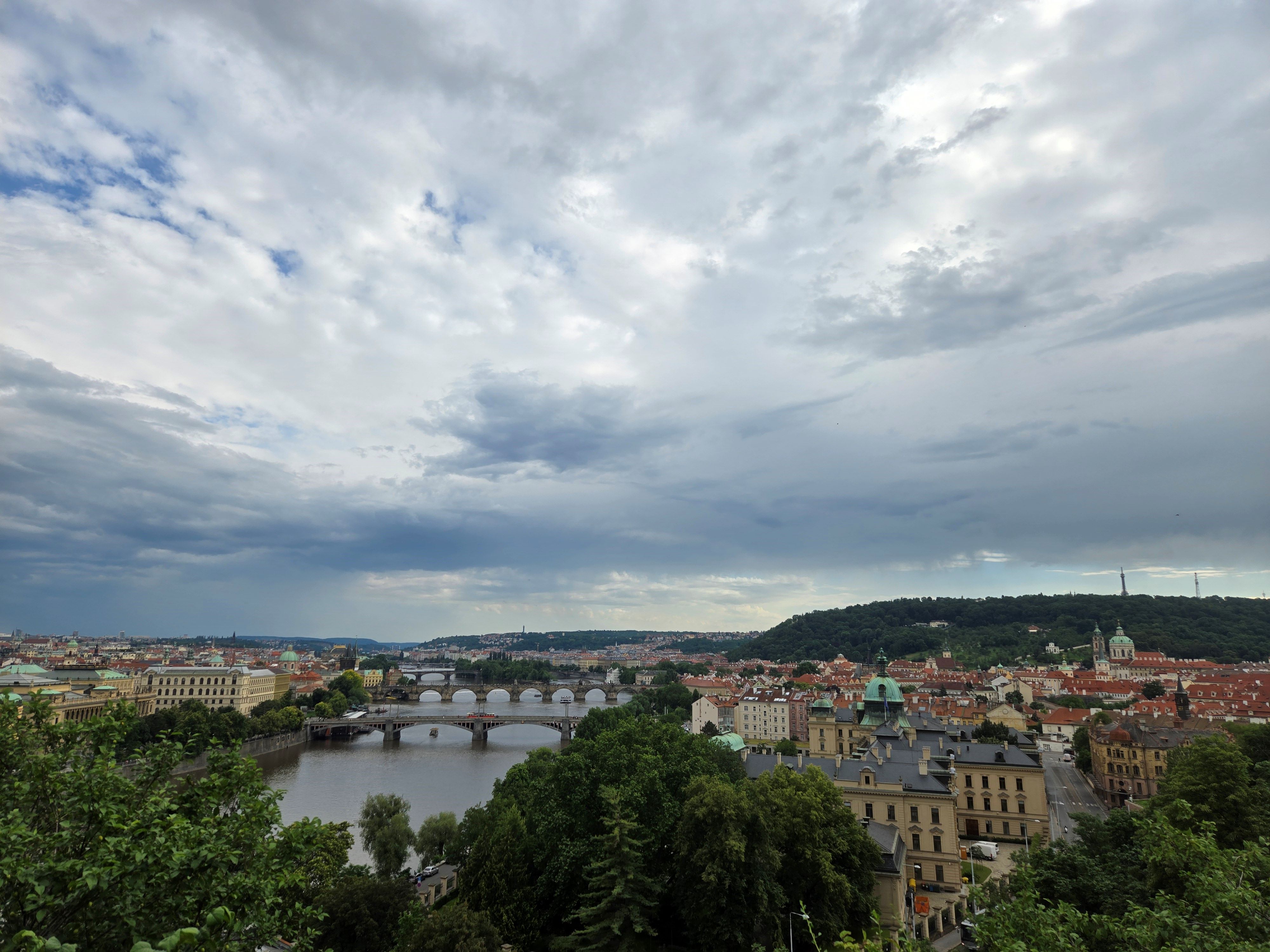
If you’re visiting the city for a longer period of time, or looking for alternate things to do in Prague not on this list, here you go:
- Museum of Communism: I visited this museum documenting the fallouts of communism in Czechia in 2017, and it was really interesting. I highly recommend it, especially if you’re new to the Central/Eastern Europe region.
- Dancing House of Prague: The Dancing House or “Fred and Ginger” is one of the most interesting architectural delights in Prague. Two colorful houses look like they’re dancing close together.
- Sex Toy Museum: Obviously this museum is only 18+ as it contains graphic toys and images throughout history. It’s a bit of a quirkier place to visit in Prague.
- Jazz Music: Prague has a handful of jazz bars playing live music. I recommend visiting one if you enjoy jazz!
- Beer Spa: Prague and Pilsen both have beer spas where you can enjoy unlimited beer and beer bread for an hour or more while relaxing in a spa.
- Walking Tour: There are tons of pay-what-you-wish walking tours in Prague. Most popular are the historic tours.
Day Trips From Prague:
If you’re on a longer trip to Prague, you might be looking for things to do outside the city. Generally, for a visit of four days or longer, it can be fun to take some day trips.
I can personally recommend:
- Prachovske Skaly: This area located in Bohemia is known for its natural rock formations. You can take a train out to one of the towns near the formations and high to the top to see these huge rock columns covered in moss. It’s still one of my happy places.
- Pruhonicky Park a Zamek: This large park right outside of Prague has a lot of walking trails through the woods and a small castle you can find. It’s a nice short trip.
Other popular day trips include:
- Cesky Krumlov: This small town located in southern Bohemia is supposed to be even more of a fairytale-esque city than Prague. I’ve heard only good things about taking a day trip there.
- Pilsen: The birthplace of Pilsner! If you’re a beer lover, you might be extra drawn to this town where you can visit the famous Pilsner Urquell brewery and a beer spa.
Logistics
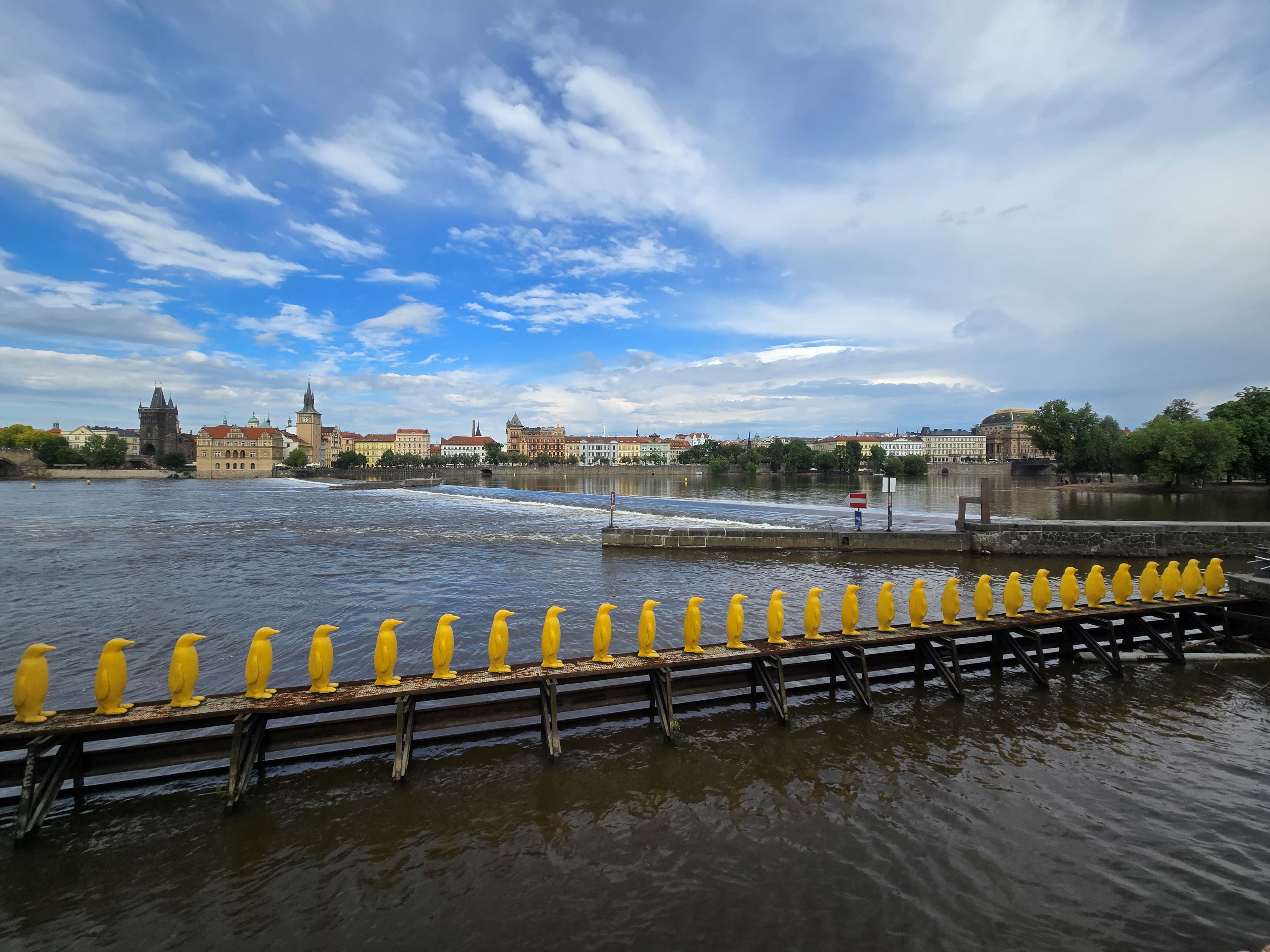
Where to Stay:
If you’re visiting Prague for only a short amount of time, or it’s your first visit to Prague, you probably want to stay in Prague 1. The popular places to stay are:
- Old Town: Near the train station and historic/touristic sites. Can be more expensive.
- New Town: In the middle of the most touristic sites, including Wenceslas Square. Can be more expensive and noisy at night.
- Lesser Town: Across the river from New Town, but still near historical sites, parks and museums.
If you’re staying for longer, or are looking for a more affordable area of town, consider Prague 2. Prague has a good public transit system, so you can still get to the main touristic sites easily enough.
Getting Around
Prague is pretty walkable, especially if you’re staying in the more touristy areas. You can easily get around Prague 1 and potentially even Prague 2 by foot. It also has a good public transit system that goes through the city, and is well-connected to many other areas in Central Europe by train and bus.
I’d definitely recommend against driving in the city, especially the tourist areas. It looked chaotic, and the streets are small and full of pedestrians.
Safety in Prague
Prague is generally considered a safe city, without much violent crime. Two of the main things you should be aware of are:
- Pickpocketing: Prague is very crowded in main areas, especially during peak times of summer and Christmas Market season. Be aware of your valuables, and don’t put them in your back pocket.
- Unlicensed taxis: At one point, unlicensed taxis were known to take tourists to the outskirts of town and rob them. If taking a taxi, ensure it is licensed from a legitimate cab company.
Planning to visit Prague? Let me know if you have any questions on things to do in Prague or logistics.
Pin this post to save it for later.

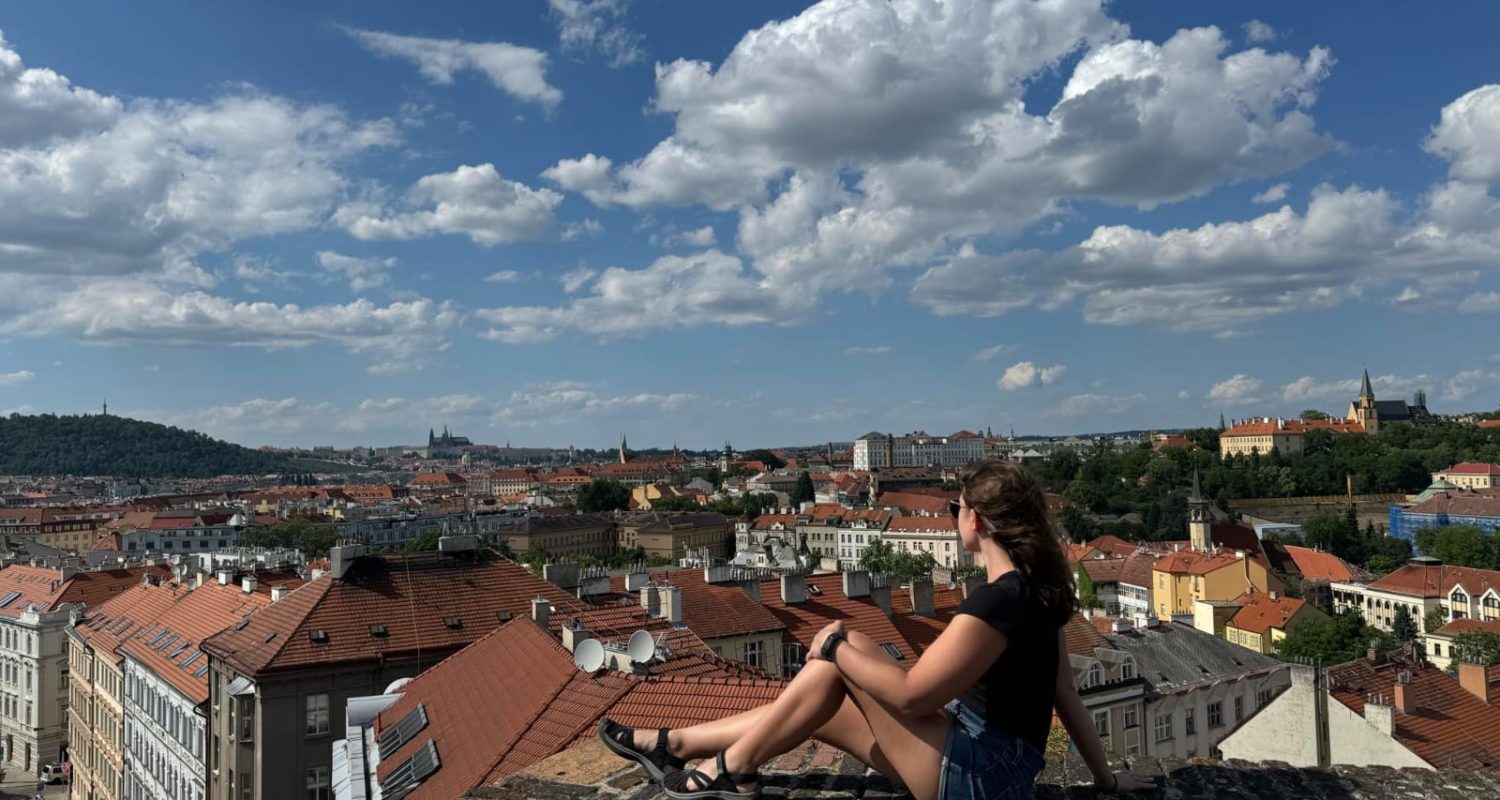
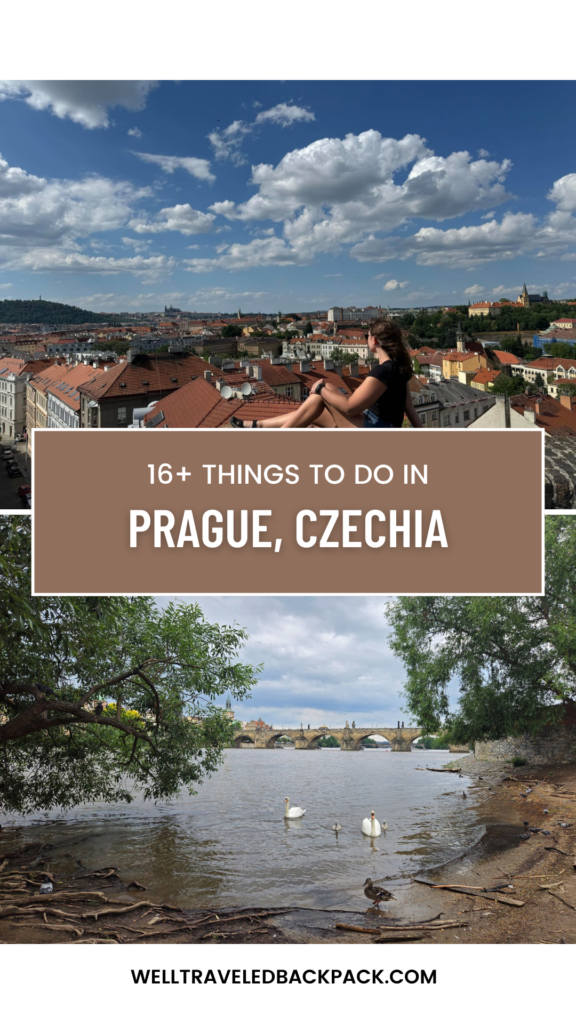
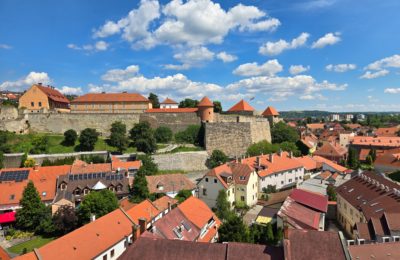
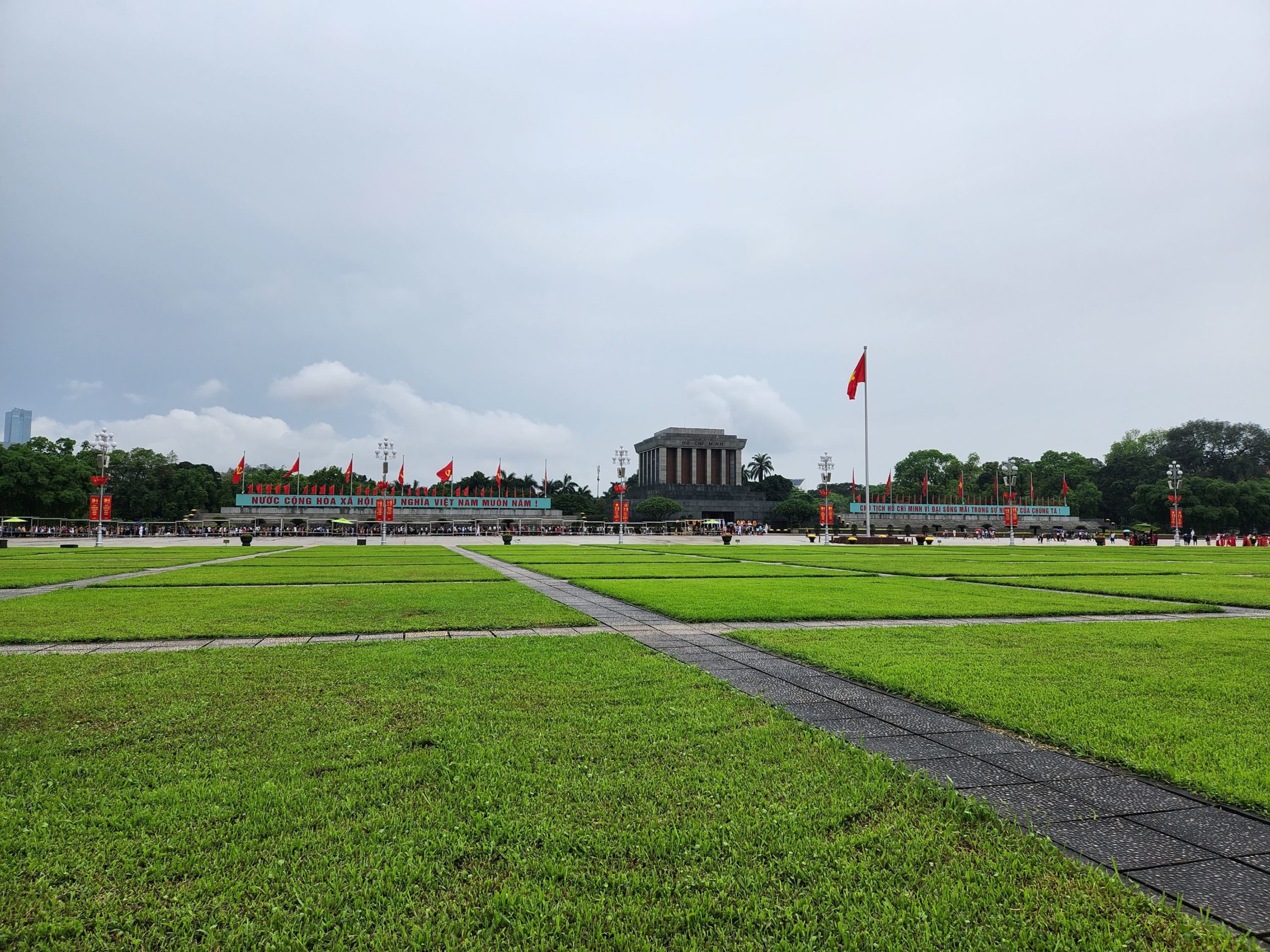
2 thoughts on “16+ Interesting Things To Do in Prague Over 3 Days”